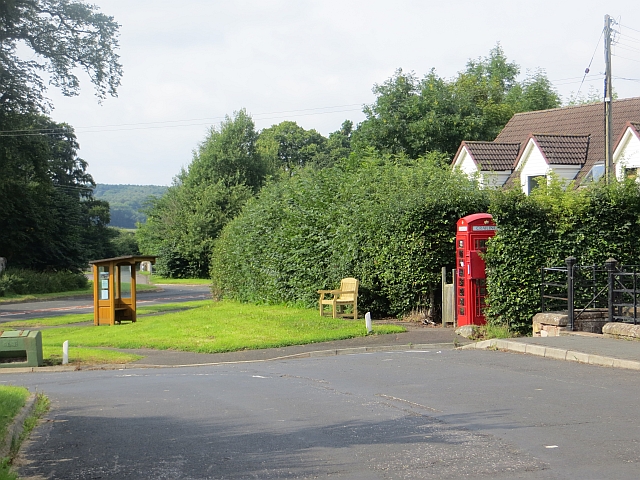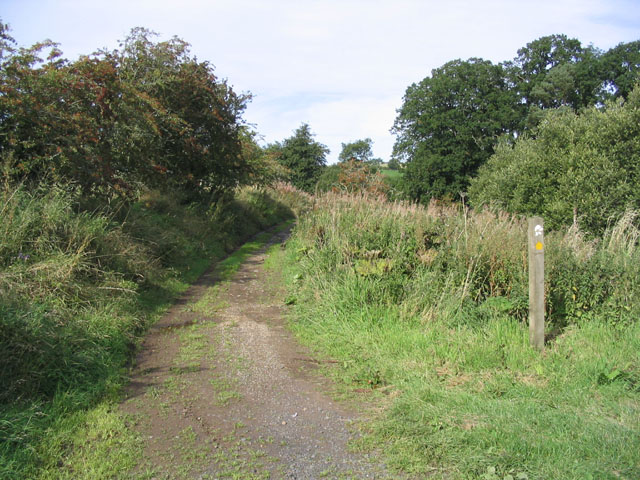Birnyedge Plantation
Wood, Forest in Roxburghshire
Scotland
Birnyedge Plantation

Birnyedge Plantation is a picturesque woodland located in Roxburghshire, Scotland. Covering an expansive area, it is a popular destination for nature enthusiasts and outdoor lovers. The plantation is situated in a serene and tranquil setting, offering visitors a peaceful escape from the hustle and bustle of city life.
The woodland is characterized by a diverse range of tree species, including oak, beech, and birch, creating a rich and vibrant landscape. The dense canopy provides ample shade and shelter for a variety of wildlife, making it an ideal habitat for numerous bird species, small mammals, and insects.
Walking trails wind their way through the plantation, allowing visitors to explore its natural beauty at their own pace. These well-maintained paths offer scenic views of the surrounding countryside, including rolling hills and meandering streams. The plantation is also home to several ancient ruins, adding a touch of historical charm to the area.
Birnyedge Plantation is a paradise for birdwatchers, as it attracts a wide range of avian species throughout the year. Visitors may spot woodland birds such as woodpeckers, robins, and thrushes, as well as raptors like buzzards and owls. The plantation is also home to rare and protected species, making it an important site for conservation efforts.
Overall, Birnyedge Plantation is a captivating woodland that offers a perfect blend of natural beauty, wildlife, and history. Its idyllic setting makes it an ideal destination for those seeking a peaceful retreat and an opportunity to connect with nature.
If you have any feedback on the listing, please let us know in the comments section below.
Birnyedge Plantation Images
Images are sourced within 2km of 55.495669/-2.5071655 or Grid Reference NT6822. Thanks to Geograph Open Source API. All images are credited.






Birnyedge Plantation is located at Grid Ref: NT6822 (Lat: 55.495669, Lng: -2.5071655)
Unitary Authority: The Scottish Borders
Police Authority: The Lothians and Scottish Borders
What 3 Words
///feuds.former.hoaxes. Near Jedburgh, Scottish Borders
Nearby Locations
Related Wikis
Crailing
Crailing is a village on the A698, in Teviotdale, 4m east of Jedburgh in the Scottish Borders area of Scotland, in the historic county of Roxburghshire...
Roxburghshire
Roxburghshire or the County of Roxburgh (Scottish Gaelic: Siorrachd Rosbroig) is a historic county and registration county in the Southern Uplands of Scotland...
Roxburgh, Ettrick and Lauderdale
Roxburgh, Ettrick and Lauderdale (Rosbrog, Eadaraig agus Srath Labhdair in Scottish Gaelic) is a lieutenancy area of Scotland. The lieutenancy area was...
Crailinghall
Crailinghall is a village near Oxnam in the Scottish Borders area of Scotland, in the former Roxburghshire. Crailinghall is on the route of the St. Cuthbert...
Hartrigge House
Hartrigge House or Stewartfield House was a country house in Jedburgh in the Scottish Borders. Its first owner was in 1614 and it was rebuilt in 1854....
Nisbet, Scottish Borders
Nisbet is a small hamlet on the B6400, in Roxburghshire, along the River Teviot, in the Scottish Borders area of Scotland. It is located 5.5 kilometres...
Jedfoot railway station
Jedfoot railway station served the town of Jedburgh, Scottish Borders, Scotland from 1856 to 1948 on the Jedburgh Railway. == History == The station opened...
Bonjedward
Bonjedward (Scottish Gaelic: Bun Jedward) is a hamlet in the Scottish Borders area of Scotland, two miles north of Jedburgh where the Jed Water joins the...
Have you been to Birnyedge Plantation?
Leave your review of Birnyedge Plantation below (or comments, questions and feedback).

















